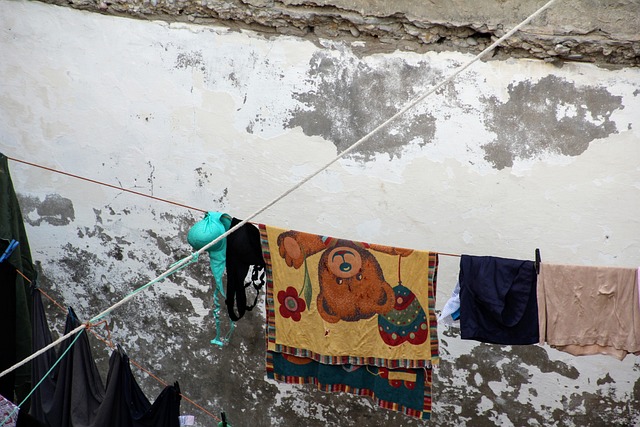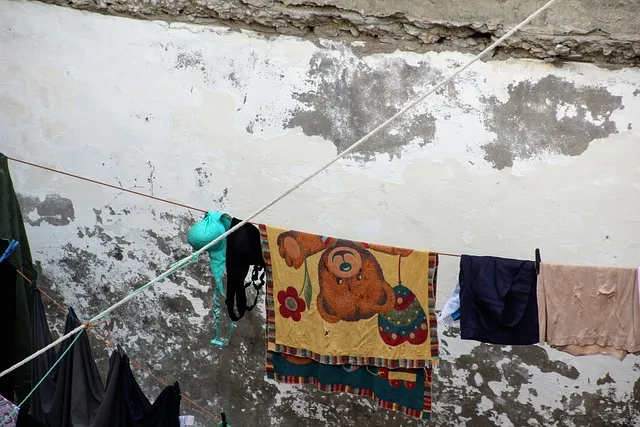What Are the Most Energy-Efficient Dryer Settings for Different Fabrics?
First off, let’s talk about cottons, the workhorses of our wardrobes. They’re usually fine with a standard high-heat setting. But here’s a tip: using the “low-heat” or “tumble dry low” setting can actually extend the life of your clothes and cut down on energy use. You might be surprised how much you can save!

Now, what about your delicate items, like lingerie or silk? For these, you definitely want to avoid high heat. Opt for the “air dry” or “low heat” settings. Think of it like taking a gentle, slow stroll versus a fast sprint. It’s kinder to your fabrics and your wallet.
For synthetic fabrics, like polyester, a medium-heat setting is usually just right. Too high, and you risk melting or warping the material. Too low, and you might be waiting forever for your clothes to dry. It’s a balancing act!
And don’t forget about towels and sheets. They can usually handle higher temperatures, but to maximize energy efficiency, use the “medium” or “high” settings, then switch to “air dry” to finish. This two-step approach helps dry them thoroughly without overworking your dryer.
Maximize Efficiency: The Ultimate Guide to Dryer Settings for Every Fabric Type
First off, let’s talk about cotton. Cotton fabrics, like your favorite T-shirts and towels, can handle higher heat levels. Use the “High” or “Regular” setting to ensure they dry thoroughly. If you’re in a hurry, this setting will get them dry quickly without too much risk of damage. On the other hand, if you’re dealing with delicates, like silk or lace, you’ll want to opt for a cooler setting. A “Low” or “Delicate” cycle is perfect for these fabrics. It’s like a gentle breeze compared to the cotton’s scorching heat, helping preserve the fabric’s integrity.
Then there’s synthetic fabric, such as polyester. These materials dry pretty fast but can be sensitive to high temperatures. Using a “Medium” setting will keep your polyester pieces looking fresh without the risk of melting or warping. It’s a sweet spot between too hot and not hot enough.
For jeans and other heavy-duty fabrics, the “High” setting works wonders. These items are thicker and can handle a more intense drying cycle without losing their shape. However, always keep an eye on the time to avoid over-drying, which can make them stiff and uncomfortable.
Finally, consider your energy consumption. Lower heat settings generally use less energy and can be kinder to your fabrics, extending their lifespan. Isn’t it great when efficiency and care go hand in hand? Each fabric has its own needs, and choosing the right setting is the key to keeping your wardrobe in tip-top shape.
Save Energy and Keep Your Clothes Pristine: Top Dryer Settings for Various Fabrics
Let’s start with cottons—those trusty jeans and comfy t-shirts. For these, use the “High Heat” setting, which is designed to handle the robust nature of cotton. But here’s a tip: remove them while they’re still slightly damp and let them air dry the rest of the way. This trick not only cuts down on energy use but also helps reduce shrinkage.
Now, for your delicate fabrics, like silk or lace, you’ll want to switch to a “Low Heat” or even a “No Heat” setting. These fabrics are like the fragile petals of a flower—too much heat and they could wither away. Using lower temperatures preserves their texture and sheen, ensuring they stay looking fresh and new. Plus, it’s a great way to prevent those dreaded snags and tears.
Wool items, such as sweaters and blankets, are a bit of a middle ground. Opt for the “Medium Heat” setting. Wool’s natural fibers are resilient, but they can still be sensitive to extreme temperatures. Medium heat helps maintain their shape and softness without causing any shrinkage.
Lastly, if you’ve got synthetics like polyester or nylon, they’re fairly low-maintenance. A “Low Heat” setting works well here. Synthetics are less prone to damage from heat, but using lower temperatures helps in reducing static and maintaining their vibrant colors.
The Secret to Energy-Efficient Drying: Best Dryer Settings for Delicate, Cotton, and More
First up, delicate fabrics are like the VIPs of your laundry pile. They need a gentle touch, and your dryer’s low-heat or air-dry setting is their best friend. Think of it as giving them a relaxing spa day rather than a full-on workout. This setting helps prevent shrinking and keeps your delicate items in top shape.
Now, when it comes to cotton, it’s all about balance. Cotton fabrics love a good heat blast but don’t need to be overcooked. The medium or regular heat setting is your go-to. It’s like hitting the sweet spot in a recipe—enough heat to get the job done but not so much that you ruin the dish.
But what about those mixed loads with all kinds of fabrics thrown together? For this, choose a setting that caters to the most delicate item in the batch. It’s akin to cooking a meal for different dietary needs; you adjust to ensure everyone’s happy.
Energy efficiency isn’t just about settings; it’s also about timing. Drying full loads can save energy compared to multiple small loads, much like cooking larger meals in one go rather than multiple small ones.
So, the next time you load up your dryer, remember these tips and settings. It’s like having a secret weapon in your laundry arsenal, keeping your clothes looking fresh while being easy on your energy bills.
Eco-Friendly Drying: How to Choose the Right Dryer Settings for Different Fabrics
For instance, delicate fabrics like silk or lace are the light soufflés of the laundry world. They thrive on low, gentle heat to avoid shrinking or damage. Use the “air dry” or “low heat” settings to keep them looking pristine. Cotton items, however, are the hearty stews. They can handle a bit more heat, but overdoing it can still cause them to lose their softness or even shrink. Opt for medium heat for cotton towels and sheets.
Now, consider synthetic fabrics as the quick pasta dishes. They dry quickly and efficiently on low heat settings, helping to prevent them from melting or warping. For best results, use the “low heat” setting or “delicate” cycle to keep them in top shape.
Incorporating these eco-friendly practices not only saves your clothes but also reduces energy consumption. Each fabric requires specific settings to avoid excessive energy use and minimize your carbon footprint. By delving into these details, you make smarter choices that benefit both your wardrobe and the planet.
Imagine each dryer setting as a unique dance move tailored to different fabrics. The more you understand these nuances, the better your laundry routine will be. So, the next time you toss a load into the dryer, remember that the right settings aren’t just about getting things dry—they’re about making a conscious choice for the longevity of your clothes and the health of the environment.
From Wool to Denim: Optimize Your Dryer Settings for Maximum Energy Efficiency
First off, did you know that different fabrics require different drying temperatures? Wool and denim are great examples. Wool, being delicate, should be dried on a low heat setting to prevent shrinkage and damage. Think of it like a gentle, warm hug for your favorite sweater. On the other hand, denim is sturdier and can handle a higher heat setting. It’s more like giving your jeans a brisk, energizing run.
When you mix these fabrics in one load, you’re setting yourself up for a mismatch in drying efficiency. Your dryer might end up using more energy, trying to balance the needs of both fabric types. To avoid this, separate your loads. Dry wool and denim separately, adjusting the heat settings accordingly. This way, each fabric type gets the optimal treatment and your dryer runs more efficiently.
Another tip is to clean the lint filter after every use. A clogged filter can seriously hinder your dryer’s performance, making it work harder and longer. It’s like trying to breathe through a straw with a block in the way – not very efficient, right? Regular maintenance ensures your dryer operates at peak efficiency, saving you both time and energy.
So, next time you toss in a load, remember to adjust those settings and separate your fabrics. Your wallet—and the environment—will thank you!
Dryer Dilemma Solved: Energy-Saving Settings for Every Fabric in Your Wardrobe
First up, let’s chat about the delicate cycle. It’s not just for your lacy underthings; this setting is a game-changer for any fabric that needs a gentle touch. By using lower heat and shorter drying times, you’re saving energy and preserving the life of those delicate fibers. Think of it like giving your clothes a spa day instead of a high-intensity workout.

Next, we have the permanent press cycle. This one’s perfect for your everyday clothes—those polyester blends and casual cottons. It uses medium heat and a cool-down period to reduce wrinkles, so you’re not only saving energy but also cutting down on ironing time. It’s like the ultimate multitasker in your laundry routine.
Now, let’s not forget the air dry setting. This is your go-to for items that you don’t mind drying slowly. It’s like letting your clothes chill out on a lazy afternoon instead of running a sprint. While it takes longer, it’s the least energy-intensive method, saving you a bunch on your electricity bill.
Lastly, consider using the sensor dry option if your dryer has one. It detects moisture levels and adjusts drying time accordingly, so you’re not wasting energy by over-drying. Think of it as having a smart assistant that knows exactly when your clothes are perfectly dry, not a minute too long.

